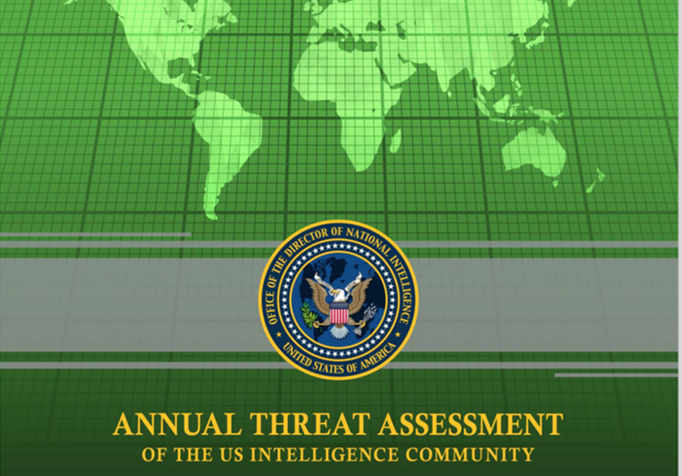US Intelligence Community Releases Annual Threat Assessment
On 13 April, the Office of the Director of National Intelligence announced the release of the annual threat assessment of the US intelligence community. The new report is much more focused on great power competition than even recent reports.
The organization of the report is a stark departure from the 2019 edition, which was divided into a section on global threats followed by a section on regional threats which included roughly two-thirds of a page on “China and Russia”. By contrast, the 2021 edition begins with a separate section on China, followed by a separate section on Russia. These are each three pages long and precede any discussion of transnational threats, showing a clear change in the approach to China and Russia as competitors. Also noteworthy is that the 2021 report no longer frames China as just a regional threat. Instead, the section is titled “China’s push for global power”.

The “China and Russia” section of the 2019 report opened with:
“China and Russia will present a wide variety of economic, political, counterintelligence, military, and diplomatic challenges to the United States and its allies. We anticipate that they will collaborate to counter US objectives, taking advantage of rising doubts in some places about the liberal democratic model.”
By contrast, the 2021 report opens its China section with:
“The Chinese Communist Party (CCP) will continue its whole-of-government efforts to spread China’s influence, undercut that of the United States, drive wedges between Washington and its allies and partners, and foster new international norms that favor the authoritarian Chinese system. Chinese leaders probably will, however, seek tactical opportunities to reduce tensions with Washington when such opportunities suit their interests. China will maintain its major innovation and industrial policies because Chinese leaders see this strategy as necessary to reduce dependence on foreign technologies, enable military advances, and sustain economic growth and thus ensure the CCP’s survival.”
While the changing focus is clear, the report does not neglect other threats. Climate change, cyber security, terrorism and the pandemic are all considered within the pages of the report. In the words of the 2021 report:
“In the coming year, the United States and its allies will face a diverse array of threats that are playing out amidst the global disruption resulting from the COVID-19 pandemic and against the backdrop of great power competition, the disruptive effects of ecological degradation and a changing climate, an increasing number of empowered non-state actors, and rapidly evolving technology. The complexity of the threats, their intersections, and the potential for cascading events in an increasingly interconnected and mobile world create new challenges for the IC [Intelligence Community’.”
The 2021 report is available here.
The earlier 2019 edition is available here.

